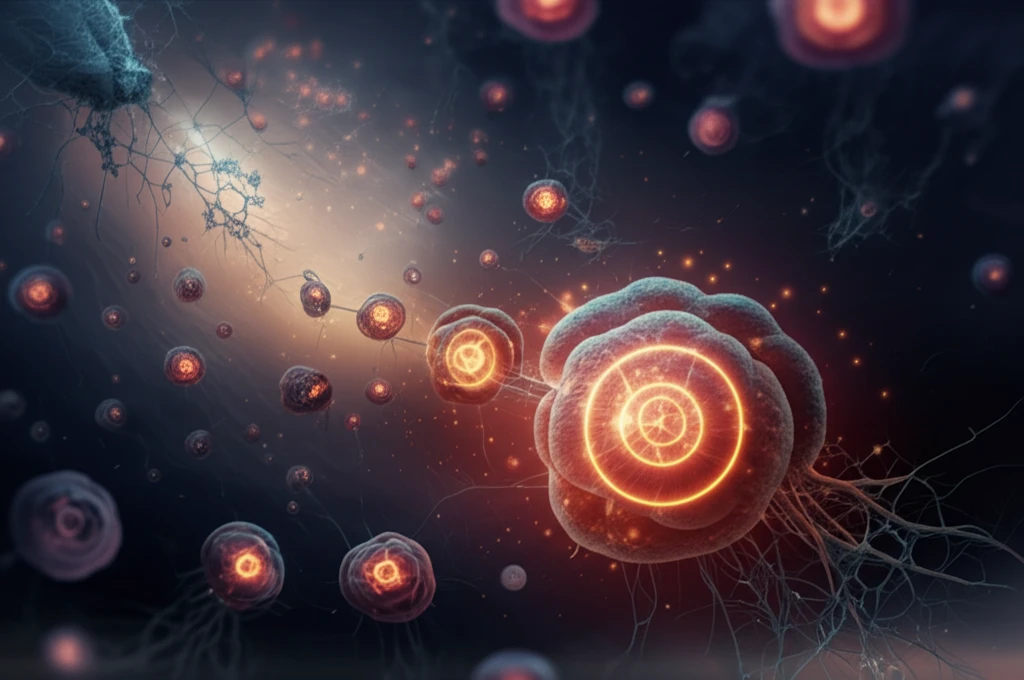
Can Nanoparticles Revolutionize Cancer Treatment? Folate-Modified Curcumin & Paclitaxel Co-Delivery
"Explore how targeted nanoparticles loaded with curcumin and paclitaxel offer a promising approach to enhance chemotherapy and combat drug resistance."
Cancer remains a leading cause of mortality worldwide, with conventional treatments often causing significant harm to healthy tissues alongside tumor cells. Traditional chemotherapy faces a major obstacle: cancer cells developing resistance to the drugs designed to destroy them. This resistance dramatically reduces the effectiveness of treatments and contributes to many treatment failures.
To overcome these challenges, researchers are exploring innovative strategies such as combination chemotherapy and advanced drug delivery systems. Combination chemotherapy involves administering two or more anticancer drugs simultaneously, aiming to attack cancer cells through different mechanisms and reduce the likelihood of resistance. Drug delivery systems, particularly those at the nanoscale, promise to improve the precision, efficacy, and safety of cancer treatments.
This article delves into a groundbreaking study focused on folate-modified nanoparticles designed to co-deliver curcumin and paclitaxel—two potent anticancer agents—directly to cancer cells. These nanoparticles are constructed from biocompatible materials and engineered for targeted drug release, offering a potential leap forward in cancer therapy.
What Are Folate-Modified PLA-TPGS Nanoparticles and How Do They Work?

The innovative approach involves creating nanoparticles from a blend of polylactic acid (PLA) and tocopheryl polyethylene glycol succinate (TPGS). PLA is a biodegradable polymer widely used in medical applications, while TPGS enhances drug absorption and has shown anticancer properties itself. The scientists modified these nanoparticles with folic acid, a vitamin that acts as a targeting agent. Cancer cells often have a high number of folate receptors on their surfaces, allowing the nanoparticles to selectively bind to and enter these cells.
- Curcumin (Cur): A natural compound found in turmeric, known for its antioxidant, anti-inflammatory, and anticancer properties. Curcumin can interfere with multiple signaling pathways involved in cancer growth and spread.
- Paclitaxel (PTX): A powerful chemotherapy drug that disrupts cell division by interfering with microtubules, essential components of the cell's structural framework.
The Future of Nanoparticle-Based Cancer Therapies
The development of folate-modified, curcumin, and paclitaxel co-loaded PLA-TPGS nanoparticles represents a significant step forward in targeted cancer therapy. By selectively delivering potent anticancer agents directly to cancer cells, this approach holds the promise of improving treatment efficacy, reducing side effects, and overcoming drug resistance. While further research and clinical trials are necessary, these innovative nanoparticles offer a beacon of hope for more effective and less harmful cancer treatments in the future.
